Traditional wood construction melds with modern biocellulose drivers to lead listeners on a high-octane sonic crusade.
In the depths of a black and grey sea, very few headphones are able to truly break away from their metal and plastic dominated frameworks. But despite austere industry trends, there are the bold few willing to step out and forge their own path forward. Zach and Bevin Mehrbach, along with the crew at ZMF Headphones, have not only scouted the trail but paved the road to handmade headphone success. With the release of the Atrium, ZMF continues to flaunt their brilliance in marrying wondrous woods with the magnificence of music.
Test Equipment:
Streamer: Lumin U1 Mini
DAC: Schiit Bifrost 2
Amps: Bottlehead Crack + Speedball (Jensen Caps, Audio Note Volume Pot), Rupert Neve RNHP
Headphones: ZMF Atrium LTD Bubinga (Stock Pads and Mesh)
Pictured Album: Phototroph | Moon Tooth
Fit, Finish, Aesthetics
More so than any of their competitors, ZMF’s headphones are heavily judged by their build quality. And while it initially seems unfair to be so critical of one brand’s construction and not another’s, this is where you call the ambulance…. but not for ZMF!
ZMF’s hallmark attribute is immediately apparent at first glance. Wood. Gorgeous Wood. Not a veneer. Not a decorative ring. But solid, carved, vital to construction, essential to sound, wood. Builds can sport anything from heritage staples maple and cherry, to LTD releases showcasing exotic species such as Leopardwood and Koa. Wood characteristics are personally matched to compliment each customer’s hardware selection, then a hand finish is applied to not only protect but enhance the natural charm and allure of the wood.
The Atrium’s launch was a bit more curated with three distinct offerings. The two standard options are cherry wood with black hardware and aged cherry with aged copper hardware. This presents one sleek modern option for those who love a contemporary look, and one that more embodies the Atrium’s name as it appears to be pulled out of a cathedral from a bygone era, weathered by decades of use. Despite my love for cherry wood and the allure of watching it age to a warm amber honey color, there was something about the LTD Bubinga that called out and pulled me to it. And when my pair was delivered and (frantically) unboxed, the reward for following my instinct was one hell of a stunning visual pay off.
The Bubinga wood cups are show stoppers, period. Right from the get go they draw you in with their deep coloration. Shifting each cup around reveals their true color spectrum. Bubinga’s signature copper mixes with golden ambers and rosewood-esq red boldened browns that transcend into each other with the varying of light. The not-quite-curly-but-not-quite-plain waterfall figuring backs up and enhances the warm color palette. Dark wavy streaks sit above short ribbons of chatoyance that mimic the figuring’s namesake, reflecting light in various intertwined angles much like the scattered refractions of a rippling waterfall.
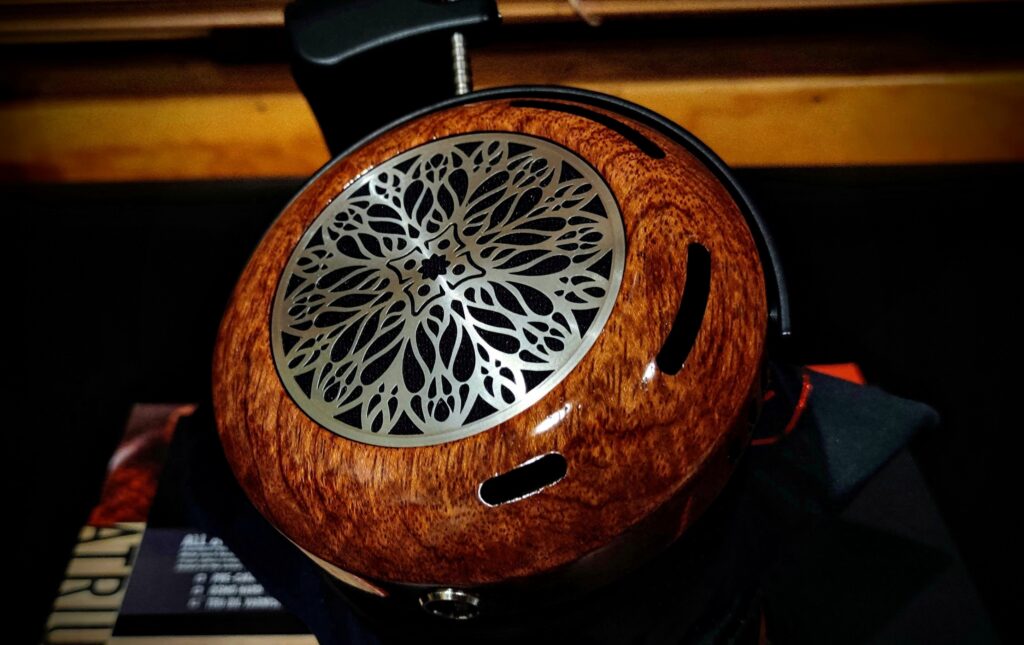
The grilles, inspired by the Rose Window of the Amiens Cathedral, are intricately machined with a gothic flourish. Both the grilles and rods are Stainless Steel giving the LTD a brighter presentation. Anodized aluminum and black leather adorn the headband and ear pads to complete a look that catches the same vibe as a fading Cherry Sunburst on a Holy Grail 1959 Les Paul. And like those legendary vintage guitars, everything here feels weighty and built for a purpose. Even the heft itself helps keep the headphones comfy, cozy and in place without the need for excessive clamp.
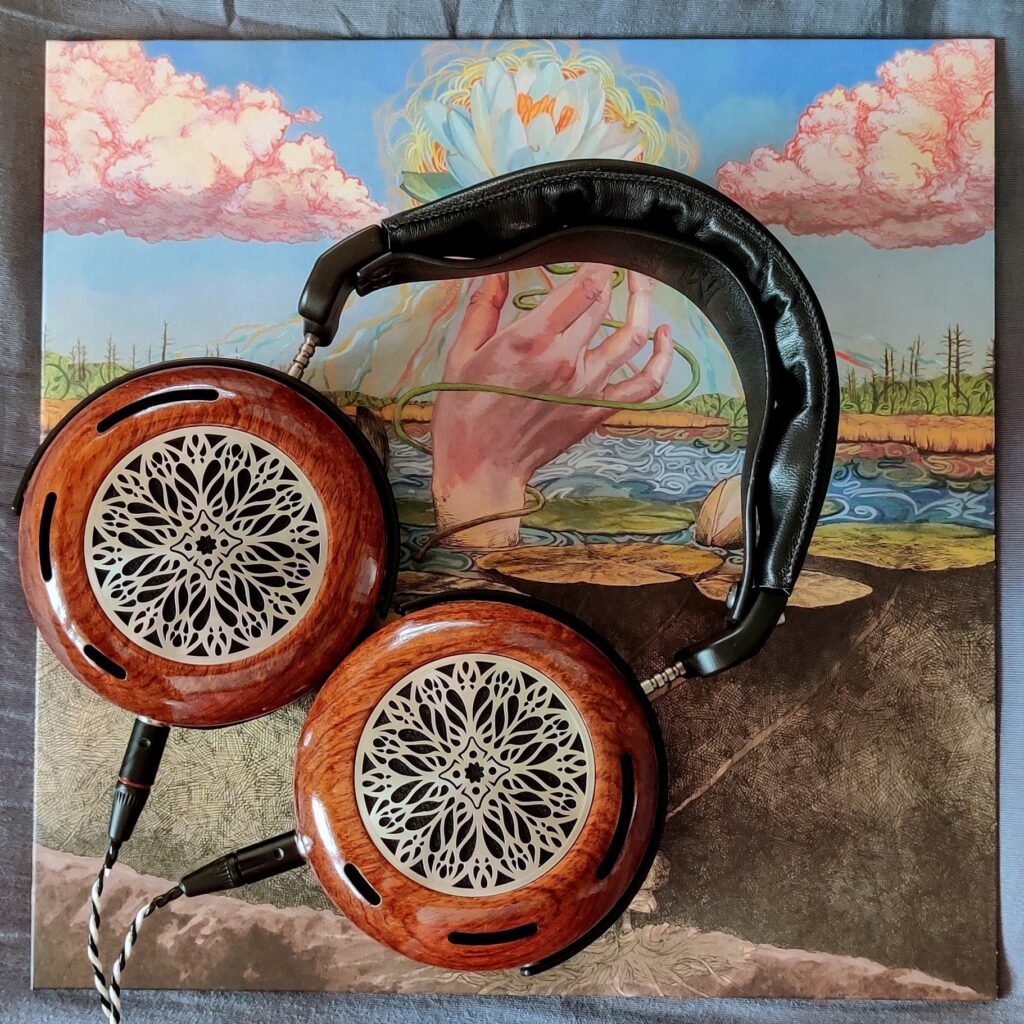
Sound
A quick but important note: Before any critical listening was performed, I burned in my Atrium for roughly 100 hours. In my honest opinion they came into their own quite a bit during this process. After initially being severely underwhelmed, something happened while switching songs at around the one hour mark. The headphone was no longer condensed in on itself, but instead opened up and was spacing things out with very exact detail and placement. Although that sound was my favorite, the Atrium continued to break in mostly smoothing out, and reducing inherent closed stage audio cues. All further impressions reflect the headphone post 100 hour burn in.
While the Atrium delivers on many fronts, it only seems fitting to start with what I would classify as the defining characteristic of this headphone. Energy. And when I say energy, imagine a sheer unstoppable avalanche pouring down a massive mountain side. Now take that level of raw energy and harness it to create soundwaves for your ear drums. That energy is what this headphone does best, and it is the backbone of the ZMF Atrium’s huge macro dynamics. No matter how much you prepare yourself there will be times where this duo catches you off guard and almost startles you to attention, a feeling that reminds me of being at a live performance. Think of those shows where the band at the local dive is rocking so hard you can swear the walls of the bar are starting to bow out. This dynamism alone makes it hard not to surrender, falling victim to the “One More Song” loop.
The next thing listeners will likely notice is the staging and presentation. There is a uniqueness here that I attribute to ZMF’s patented Atrium Dampening System (more info here). Sounds extend out in all directions to project a genuinely large stage, while clearly defined “walls” keep it all contained. Normally closed-in elements have a negative connotation, but with the Atrium it is a defining characteristic and an absolute benefit as those “walls” bestow tons of information. They establish a definitive stage size and provide reference points to aid listeners in placing objects in that audio space. And, much more fascinatingly, those walls best convey the effect the room has on the final recording. Growing up I was dragged to all my sibling’s musical performances, opera and big orchestra outings galore. The vast number of these shows occurred in old churches and estates that were never ever amplified. Yet, these turn of the century constructions were some of the loudest, fullest, most complex sounding venues. The structures themselves were purposely built to bolster and amplify what is on stage. Stringed instruments swirl and thicken while reverberating off walls. Sung vocals echo onward, lighting up the length of the space. Accompanists hammer on and fully activate grand pianos, rumbling the floor and conducting bass from the vibration of the instrument’s size alone. The Atrium name is so fitting as it truly captures and exudes the energy and staging of these grand performances.
The tonal spectrum is satisfyingly full. The bass, while not the tightest or most square punching, is plentiful. Thankfully it is never forced or too much. Sub-bass is felt physically shaking the headphones, representing venerably, but it does drop off short compared to a planar’s “linear bass extension”. A nicely rounded mid-bass delivers bloom and boom without becoming boomy and artificial. All in all these bass notes create a tactile foundation that stops at the exact right spot to not overshadow the mid range. Which is perfect as these mids are quite compelling.
While the Atrium delivers an undoubtedly natural and organic feel across the frequency range, these attributes are showcased best by the mids. The mid range bestows this convincing timbre that reminds me of the HD 650. Though where the Senn sways you with it’s detail rich, romantic mids perfect for tea drenched Sunday mornings and female vocals; the Atrium is airy, lively, and growling, bolstering male voices and electric guitar riffs. Neither headphone is a slouch at the other’s party trick as there is more overlap than difference. The biggest differentiation is that the HD 650 is now almost exclusively defined by that mid range and the Atrium instead stages the mids as a marvelous body connecting the bigger picture.
Laying on top of that audio picture is the treble. And “laying” is a fitting descriptor as the highs are the flattest, most relaxed part of the entire spectrum. Some would perceive this as being dark, but I tend to hear it more as the treble spikes and juxtapositions are smoothed out. This shouldn’t be confused with the sound being veiled or recessed (as this headphone is neither); instead it feels a bit velvety, as if the treble region’s presence and volume are dialed back to avoid interfering with the bass and mids as they command the main stage. There is a uniqueness to the Atrium in that it leverages this eased high response to pump out a non-fatiguing yet hugely energized, dynamic, and resolving sound. To be specific, by non-fatiguing I mean zero discomfort even after hours of listening in the midst of the worse allergy season I have experienced. It is almost enigmatic.
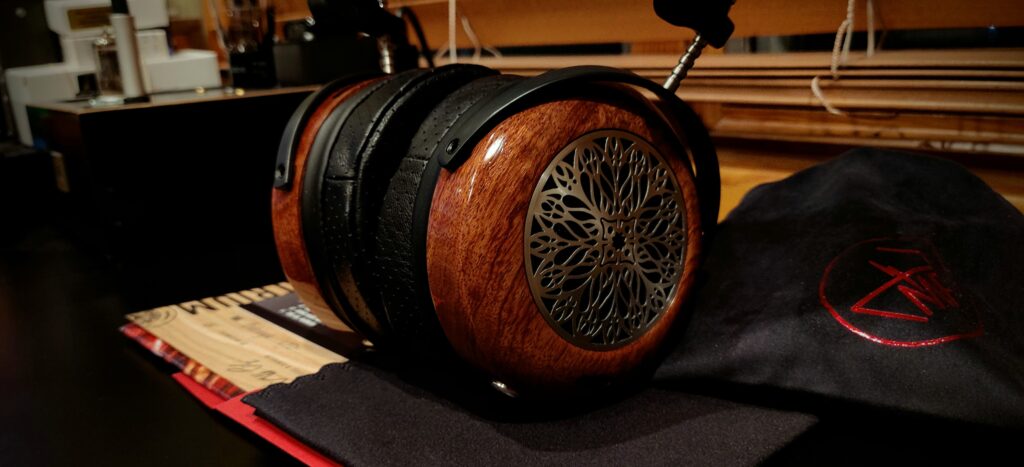
A Quick Comparison
To better convey how the Atrium comes across, it may be best to compare it to something well known. The Sennheiser HD 800 S is not only a perfect reference point, it is also a headphone I would suggest to those looking for a set that is fundamentally different yet complimentary to the Atrium.
To start, the HD 800 S has a very delicate, light, and agile feel and presentation. It projects a scene that is void of any boundaries or walls, as if it was staged in the middle of a big open field. Pieces have this transparency to them, allowing you to seemingly look through each piece and see not only what is behind it but how those layers intermingle. This conjures the image of the open window on a sunny spring day, a brisk breeze pulls on the sheer white window dressing, rolling it over itself, just barely veiling the waves of each layer underneath. There is also this well defined leading edge to notes and textures that keeps them crisp and clear, as if they were cut by a razor’s edge. It is bright, lightweight, and clean!
The ZMF Atrium comes across much more substantial as it pumps the music at you, contrasting the light handed approach of the HD 800 S. The sound is weighty and saturates a large stage that notches in just slightly smaller than the Senn’s. The walled room cues reflect spatial information well, filling black space with informative echoes. Recordings of concert halls feel quite grand, underground jazz clubs feel smoky and intimate, and overall there is a more enjoyable and dynamic use of space by the ZMF. Transients are rounded and leading edges softened. This lends to a very smoothed headphone that emphasizes the body and heft of the notes as opposed to the outline that defines them.
Notes & Concluding Thoughts
One of the goals ZMF set for the Atrium was to develop a headphone whose voice was not yet covered by the rest of their lineup. While I have not spent much time with their other headphones, ZMF absolutely succeeded in providing a unique offering that I have not heard covered by anything else in the market. The Atrium is boastful, bombastic, energetic, and engaging. Instead of complaining about recording quality there is always an emphasis on what makes the music fun. An overriding smoothness wraps this all up and provides some easy listening, even for sensitive ears.
All this waxed poetic does not mean the Atrium is without fault. That soft leading edge and forgiving attack lacks some tactility. This creates textures that are a bit too smooth for my personal taste, and while still fully resolved, details are hard to pick out as they blend into the bigger mix. Treble cues, such as the sizzle of cymbals and the zing of steel acoustic guitar strings, seem equally subdued. But most of these attributes were present early on and were quite spectacular, it just seems they become ironed down as the drivers break in. Though, this does leave hope that swapping to a more open Titan dampening mesh may restore some of what was lost.
But at the end of the day is the ZMF Atrium a worthwhile headphone? The answer to that is a resounding “Oh Hell Yeah!” The headphone’s defining characteristics (good, bad, or otherwise) come together to create a portrayal of such charming nature. It is that sound and style that allows the Atrium to mesh so well with the vast majority of music. And that charm. It just seems to originate from the cores of Zach and Bevin themselves. Even the case goodies they accompany with the Atrium are more of a welcoming hug between friends as opposed to the sterile initiation of white handling gloves by other TOTL headphones.
I’ll wrap this up with what I believe to be a suitable comparison. In 2001 the show “Samurai Jack” premiered bringing with it a unique art style. Most, if not all animated series up to that point utilized black line outlines to structure their appearance. Samurai Jack instead layered color onto color with nothing to separate each mass. While at times this led to individual forms blending into each other, you mainly were presented with a showcase of these bold bodies of color that at their best forged immersive scenes that drew you ever inward. And this art direction did not rely on extreme detail for it’s magnetism, but instead went all in on casting solid hues and tinted shapes against each other. The result for Samurai Jack, and the result for the ZMF is exceedingly vivid and immensely riveting artistic expression.

For Further Atrium and ZMF Headphone Discussions…
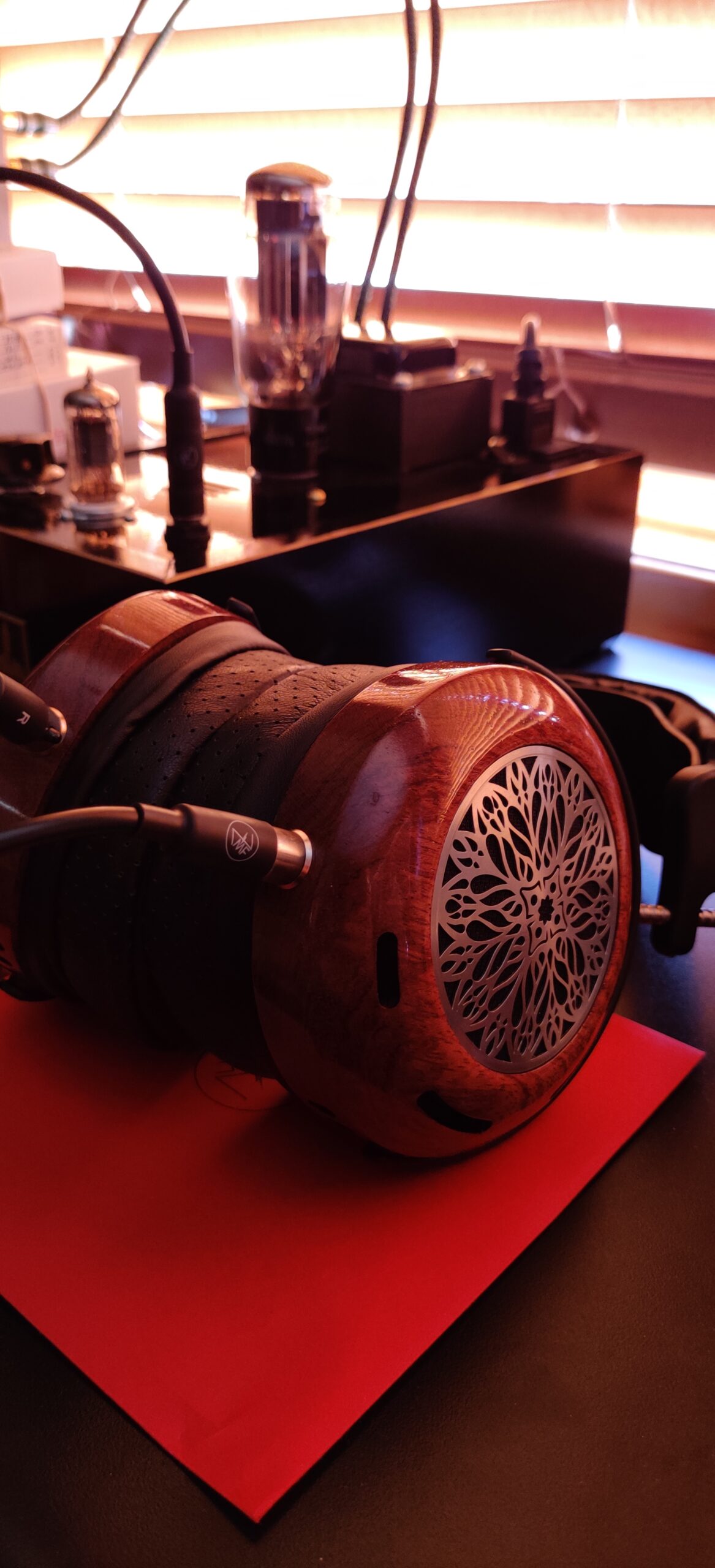
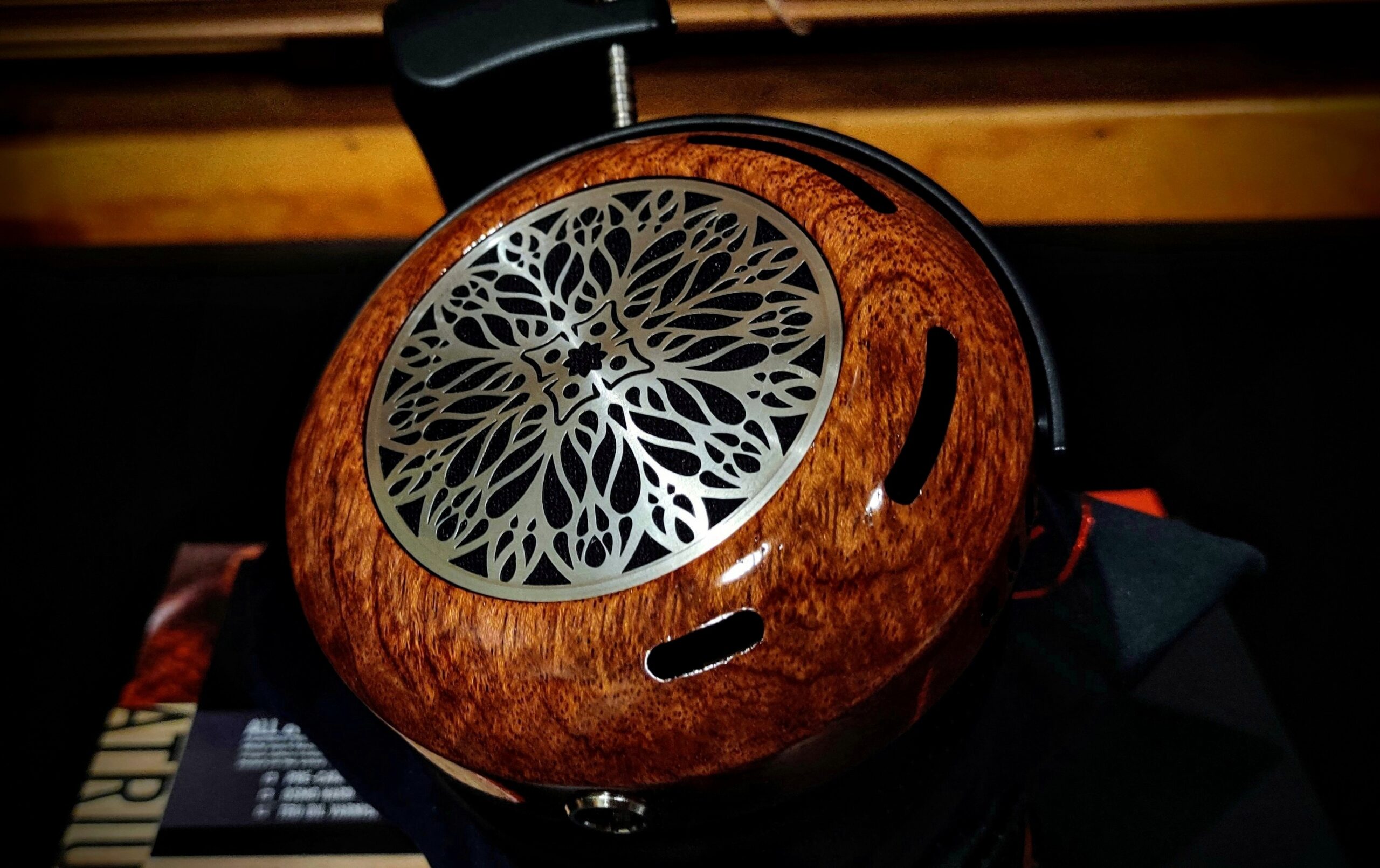
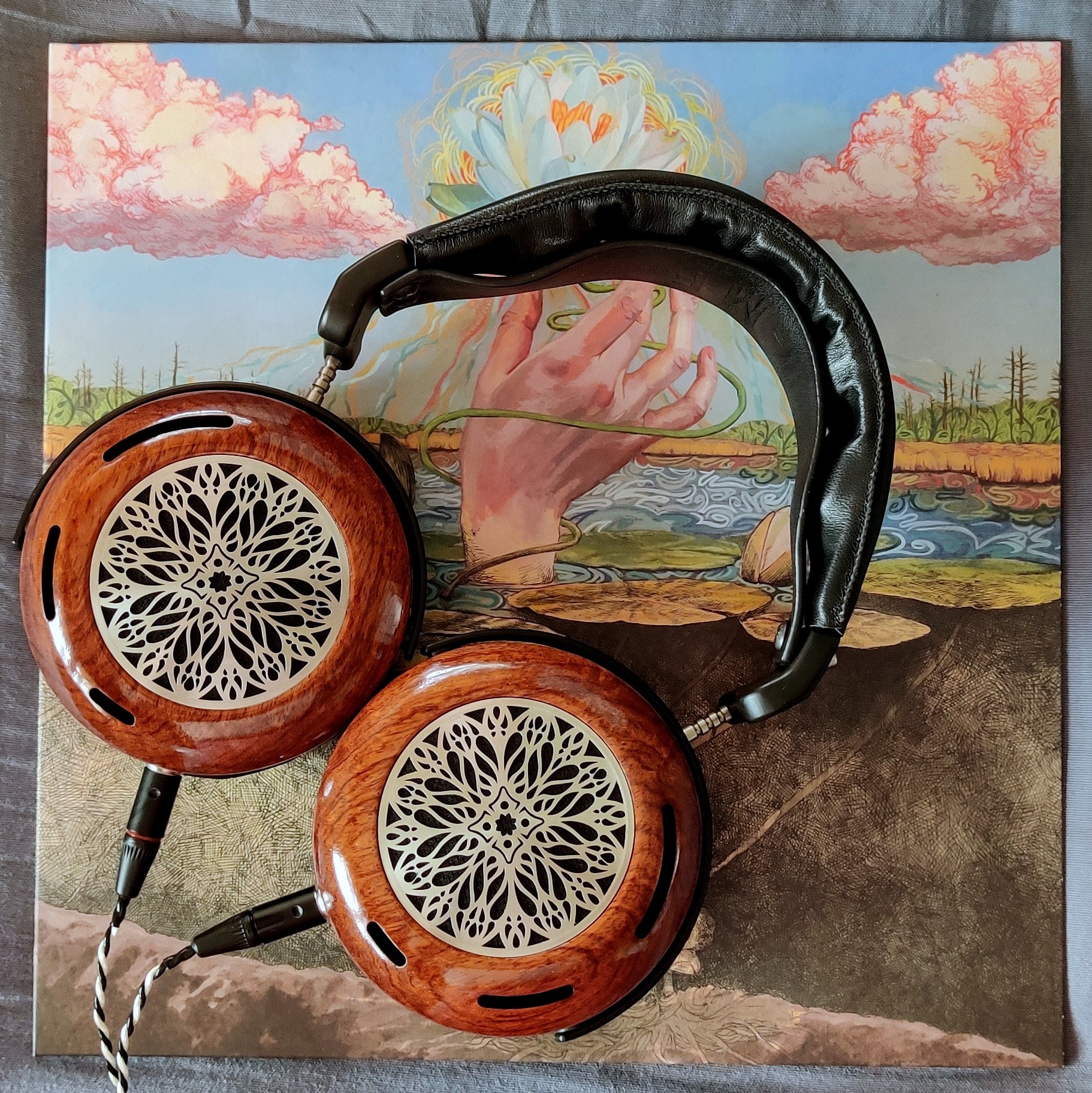
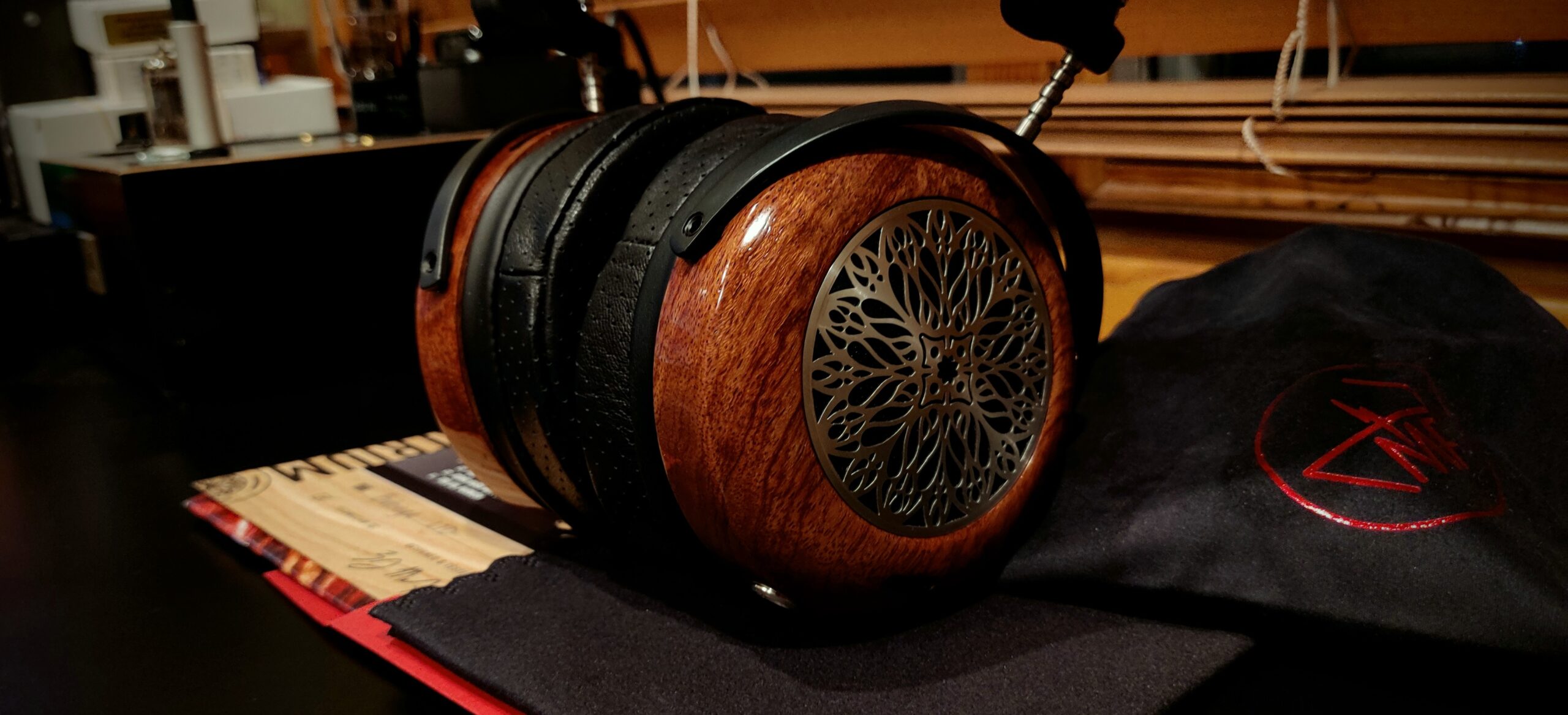

Inching across the audio landscape in search of the coveted “Endless Groove”.